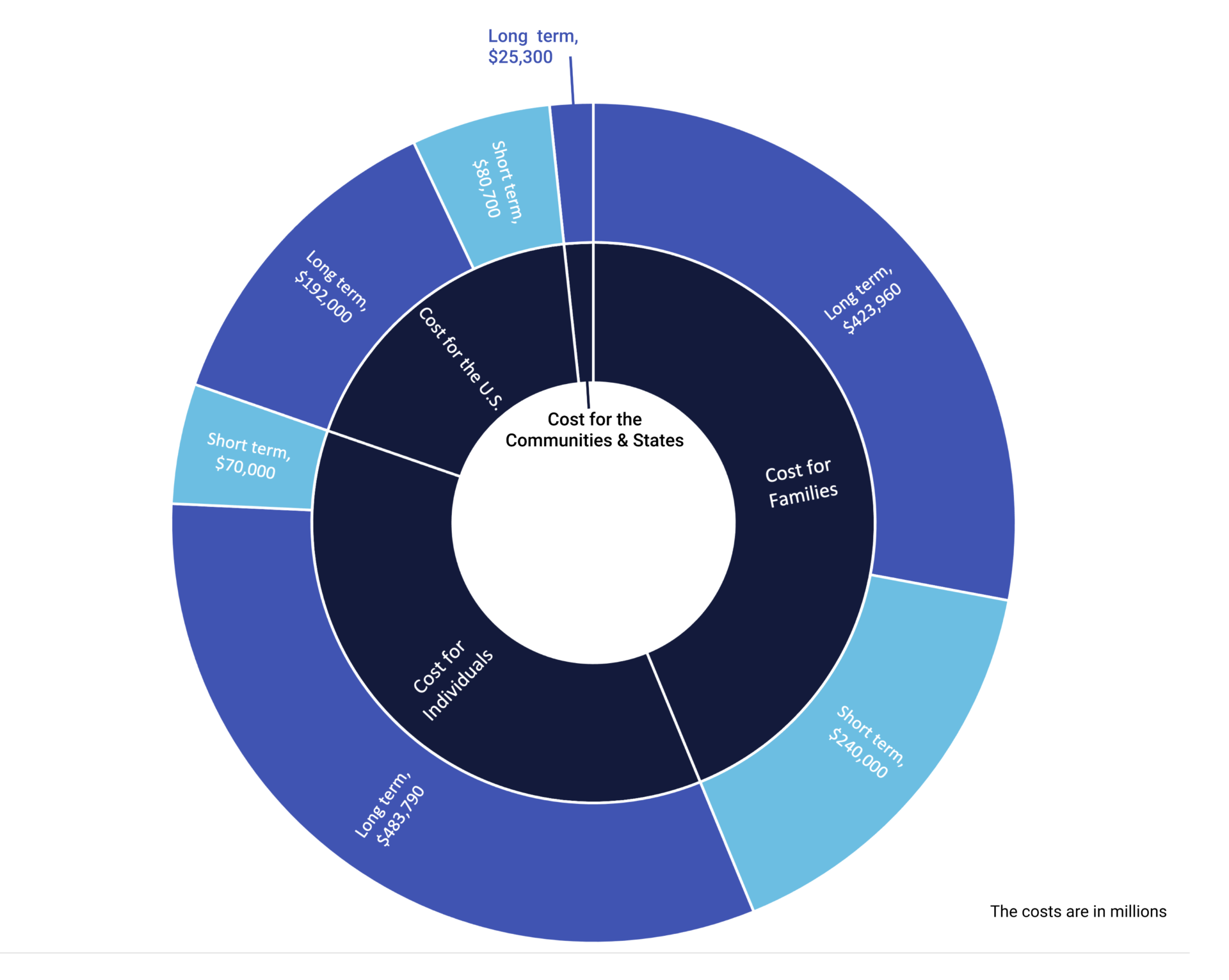The Economic Impact of Incarceration
By Kelyu Yu – Economic Research Intern
Explore the direct and indirect costs of incarceration on individuals in the criminal justice system, as well as their families, communities, and the nation as a whole. Emory University student and PIN Economic Research Intern Kelyu Yu dedicated a semester to researching this topic. See her findings and read her full report on our new Economic Impact page. Below is a preview:
Introduction
How much the U.S. is willing to waste on incarceration? Tens of billions of dollars were poured into the U.S prison system for locking up millions of people behind bars. While The Bureau of Justice Statistics reports approximately $80 billion were spent on the prison system, the actual cost far exceeds this number with various other underlying collateral costs.
Why should we care about the economic loss associated with incarceration? As Shelia A. Bedi put it: “Every penny our government spends on prisons and jails is a penny that does not fund schools, health care, economic development, and transportation infrastructure.”[1] In fact, many states already spend more money per inmate than per student, this difference even went as far as $27,000 in 15 states.[2] Similarly, every penny the inmates and their families lost translated to a collateral impact on labor productivity, child welfare, and self-care. Not to mention the lasting damage to mental and physical health as well as the rising criminogenic tendency associated with incarceration.
This report will discuss both the direct costs and collateral costs of incarceration from four levels: individual, family, community & state, and the U.S. as a whole.
